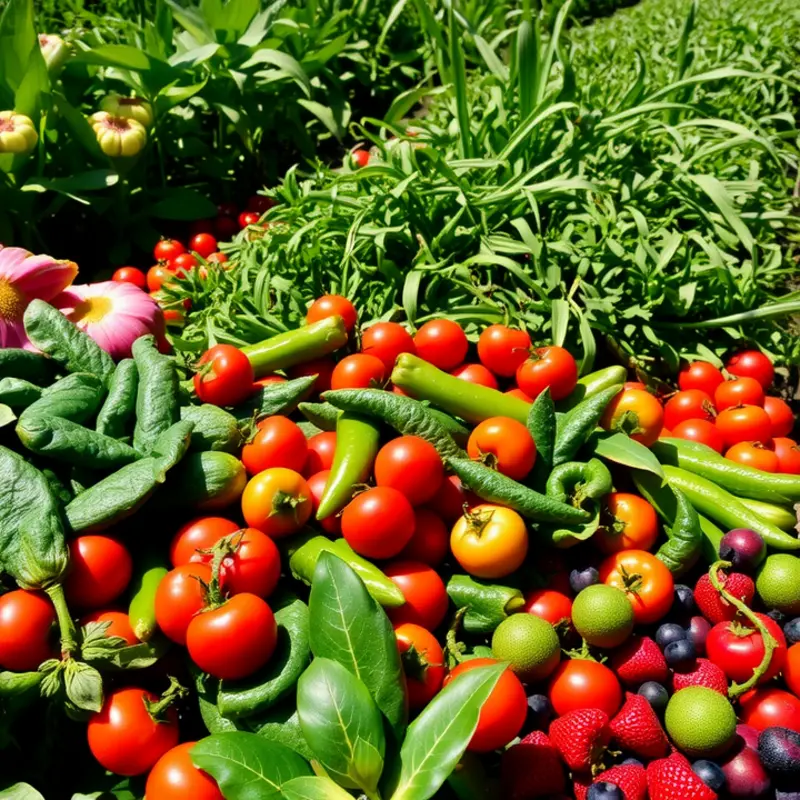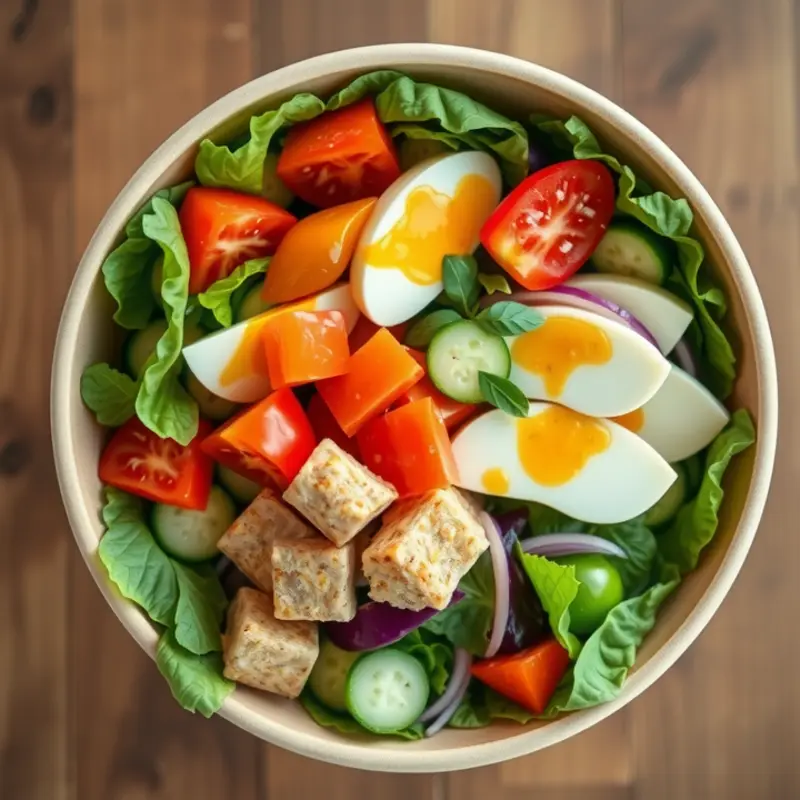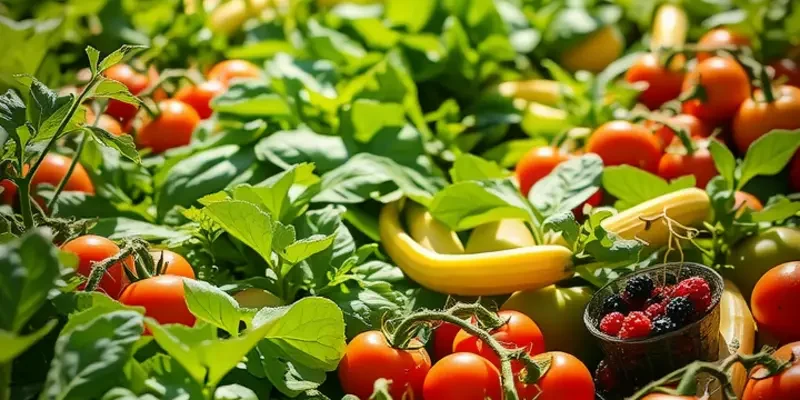Crafting the perfect salad isn’t just for seasoned chefs. It can be an enjoyable daily task, empowering home cooks of all levels to experiment with fresh ingredients. Making efficient choices can elevate salad preparation into an effortless and fun experience. With practical techniques, you can achieve beautifully balanced salads that dazzle the taste buds and nourish the body. Let’s embark on a journey to improve your kitchen skills by mastering the art of salad assembly.
Choosing Your Fresh Ingredients

Crafting a vibrant and nutritious salad begins with the selection of fresh ingredients. Opting for a diverse range of components not only enhances flavor but also boosts nutritional value. Here’s how to make informed choices for your salads.
Start with the greens. Select a mix of leafy vegetables, like spinach, kale, or arugula, to provide a robust base. These greens are rich in vitamins A, C, and K, and bring a variety of textures. For a milder taste, lettuce varieties can be mixed with more bitter greens to create a balanced profile.
For vegetables, aim to incorporate a rainbow of colors. Each color represents different phytonutrients, contributing to overall health. Red bell peppers, carrots, and purple cabbage not only add brightness but are also packed with antioxidants. Add cruciferous vegetables like broccoli or cauliflower for a crunch and added fiber.
Fruits in salads can deliver both sweetness and an acidic bite. Berries, like strawberries or blueberries, are fantastic additions due to their high antioxidant content. Diced apples or pears can offer crispness, while citrus segments such as oranges bring a refreshing tang.
Protein is essential to make your salad a well-rounded meal. Chickpeas or lentils are excellent plant-based options; they’re nutritious and complement a variety of flavors. For animal-based proteins, consider grilled chicken, hard-boiled eggs, or tuna. Always opt for diverse protein sources to keep the nutrient intake balanced.
Nuts and seeds offer an extra layer of flavor and texture. Almonds, walnuts, or pumpkin seeds provide healthy fats and additional proteins. Lightly toasting them can further enhance their flavor profile.
When choosing ingredients, keep storage and seasonality in mind to maximize freshness. Seasonal produce not only tastes better but is often more economical. For some practical tips on maintaining the freshness of your salad ingredients with minimal waste, explore this guide on low waste cooking and prep.
Finally, always wash your produce thoroughly. This step is crucial for food safety and ensuring all components are at their best. By carefully selecting and preparing fresh ingredients, your salads will not only be nourishing but also a delightful feast for the senses.
Tossing Techniques and Dressings

Mastering the art of salad assembly involves not only selecting fresh and vibrant ingredients but also honing the skill of tossing and dressing your greens. Once you’ve gathered your beautiful ingredients, it’s time to focus on how to toss and dress your salad to perfection.
Begin by selecting a bowl large enough to allow for easy tossing. This space ensures your ingredients mix evenly without flying out. When ready to toss, use your hands or a couple of large salad spoons to gently lift the ingredients from the bottom, encouraging even distribution.
Technique: Gently lift, don’t stir. The lifting action incorporates the toppings evenly into the greens, preventing clumping and ensuring all components are spread through the salad.
When selecting a dressing, homemade options often work best. Simple vinaigrettes or yogurts dressings can easily be whipped up with pantry staples. Aim for a balance of acidity and sweetness—think vinegar paired with olive oil, mustard, and a touch of honey. Seasonings such as garlic or fresh herbs will amplify the taste.
Pro tip: For a creamy alternative, consider avocado or blended nuts. These natural options add depth without overpowering the salad.
To dress your salad, start by adding a small amount of dressing and toss gently. It’s easy to add more later, but hard to fix an overdressed salad. Drizzle around the edges of the bowl to mix effectively as you toss. Ensure every leaf has a touch of dressing without drowning the dish.
Once your salad is tossed and dressed, it’s time to focus on plating. Choosing a wide, shallow bowl or plate can enhance presentation while allowing easy access to every ingredient. The aesthetics of your salad can make eating a more enjoyable experience, encouraging mindful eating and enhancing overall satisfaction. Learn more about mindful eating habits here.
Remember, each salad should be a reflection of balance and harmony—whether you’re focusing on color, texture, or flavor. By mastering these tossing techniques and dressing approaches, your nutrient-packed salads will not only be visually enticing but also delightfully flavorful, engaging all senses with each bite.
Final words
Efficient salad assembly requires just a few practical strategies to become an exciting culinary routine. By selecting fresh, seasonal ingredients and mastering straightforward tossing techniques, anyone can elevate their salad game. Remember, the best salads come from experimentation and creativity with what you have on hand. Don’t be afraid to mix and match flavors and textures to find your perfect combination. Now, with these tips in mind, grab your ingredients and start building delicious salads that are packed with nutrients and satisfaction.







